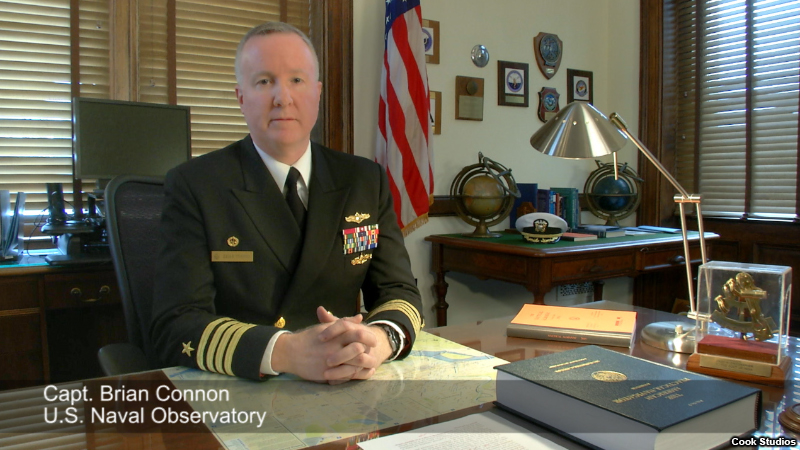Introduction

Capt Connon: Hello. I’m Captain Brian Connon, the 54th Superintendent of the U.S. Naval Observatory. Since the Observatory’s establishment in 1830, celestial navigation has always been a primary mission focus. We provide celestial information to the Navy and the Department of Defense to support navigation, precise positioning, and command, control, and communications systems.
It may seem odd that celestial navigation is still useful today when satellite navigation systems, like the Global Positioning System, are ubiquitous and so precise. Why in the world would we want to use celestial navigation today? A quote from the book “American Practical Navigator” by Bowditch sums this up nicely: “A mariner is constantly tempted to rely solely on electronic systems, but electronic navigation systems are always subject to failure and the professional mariner must never forget that the safety of his ship and crew may depend on the skills that differ little from those practiced generations ago. Proficiency in conventional piloting and celestial navigation remain essential.”
While GPS is the primary source of positioning, navigation, and timing data for the Department of Defense, it is Navy policy to require an independent source of positioning information. Celestial navigation is independent of GPS and can provide the ultimate backup for navigation purposes.
Celestial navigation does have its drawbacks and limitations. It is time consuming. It cannot be conducted during bad weather, and its accuracies of one to two nautical miles are nowhere close to that of GPS. However, since it can be done with little more than a watch, a sextant, and a Nautical Almanac, it remains a viable option when all else fails.
The module you are about to begin will familiarize you with traditional celestial navigation. It is broken up into three parts, the first of which will show you how celestial navigation works. The second part introduces you to the Intercept Method, the graphical technique used by navigators around the world. The third and final section will take you through a day’s work in navigation using three-star fixes and Sun lines. After working through this module, you should have a good grasp of celestial navigation and the steps required of a navigator to find the position of his ship. Good luck.